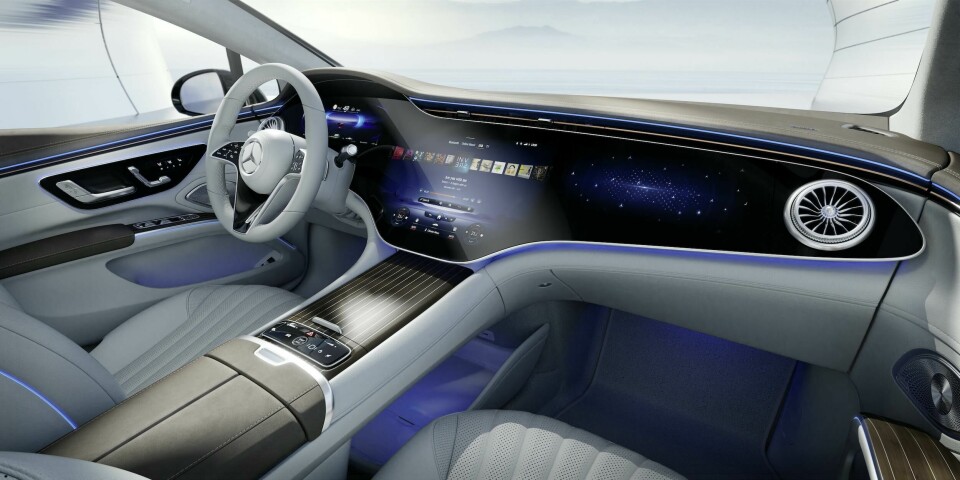
Interior Motives Summer 2021: Mercedes Benz EQS
The Mercedes EQS’ mother of all screens polarised the design community between believers and sceptics. However, Guy Bird finds there is more to the German’s marque’s interior than its vaunted black mirror
Love it or loathe it, the ‘physically buttonless’ 55.5in car-width ‘Hyperscreen’ option that dominates the cabin of the production Mercedes EQS full-electric limousine is a significant moment in interior car design. Making ever bigger touchscreens and reducing real buttons and switches until the instrument panel has none at all is a logical move, given the increasing number and size of screens within other areas of our lives from TVs to tablets. But in some quarters of the internet, the announcement of the ultimate no-button instrument panel was also shocking and branded potentially dangerous.
First unveiled virtually to the world in January 2021 as just a screen – actually three large screens under one glass – and then later in early 2021 as part of the wider EQS vehicle reveal, it’s arguably made its interior more (in)famous than its exterior, or indeed its power and performance. And for that again the EQS is significant.
In an exclusive chat with Interior Motives, mild-mannered Mercedes’ veteran head of interior design Hartmut Sinkwitz, is in agreement on that point. “The EQS is probably my most exciting interior design project and for Mercedes too, because it was a huge step, with much higher investment which meant more risk. We had this vision that a fully-digital screen would be avant garde and futuristic and now we can say its reception has been fantastic and was the right way to go. But five years back no-one knew what the reaction would be. We had to convince everybody.”
As Sinkwitz alludes, the idea for the EQS’ interior Hyperscreen can be traced back to late 2016. He credits Mercedes’ interior-focused design studio on Lake Como in Italy for the invention (now closed and moved to Nice in France) and says by summer 2017 the team had chosen one design and continued the project at Mercedes’ German HQ in Sindelfingen, before the design freeze in summer 2018.
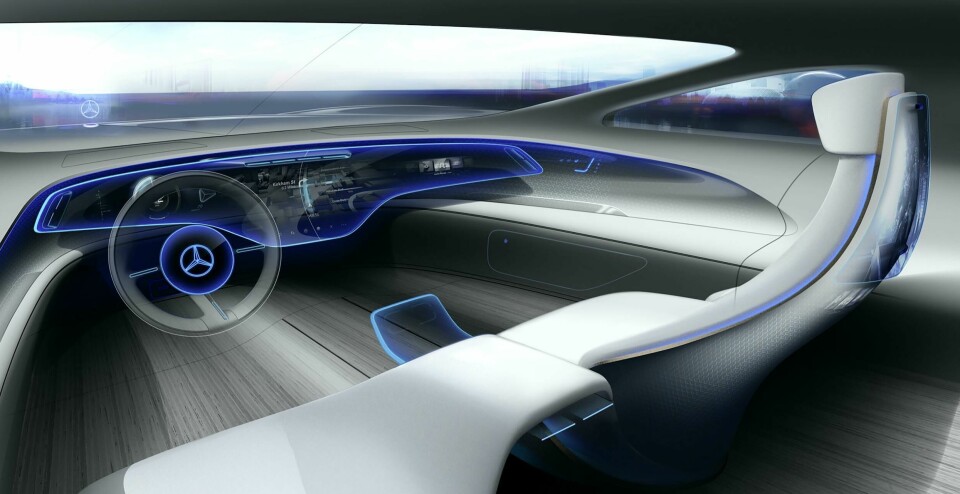
Key to usability concerns was that it would be designed to offer all the most-used features like phone, mapping and music on a so-called ‘zero layer’ main screen, with pop-up notifications for less-used features, rather than lots of confusing sub-menus and layers that can be hard to locate on the move. The design team also wanted the Hyperscreen to have quicker haptic feedback – the lack of which is still a major problem with many ‘laggy’ and imprecise current car touchscreens – via 12 actuators under the Hyperscreen’s surface which trigger vibrations in the glass cover to acknowledge a finger’s touch.
Of course, planning such a complex dominant screen is one thing, but the UX side of design is usually the last thing to be ready in a car interior – due to the speed of change within the software industry compared to the wider automotive one – so what Sinkwitz and his team had to show senior management in the early days of the EQS’ interior development was limited. “We just presented pure design models with aesthetic pictures stuck on and a back light,” Sinkwitz says.
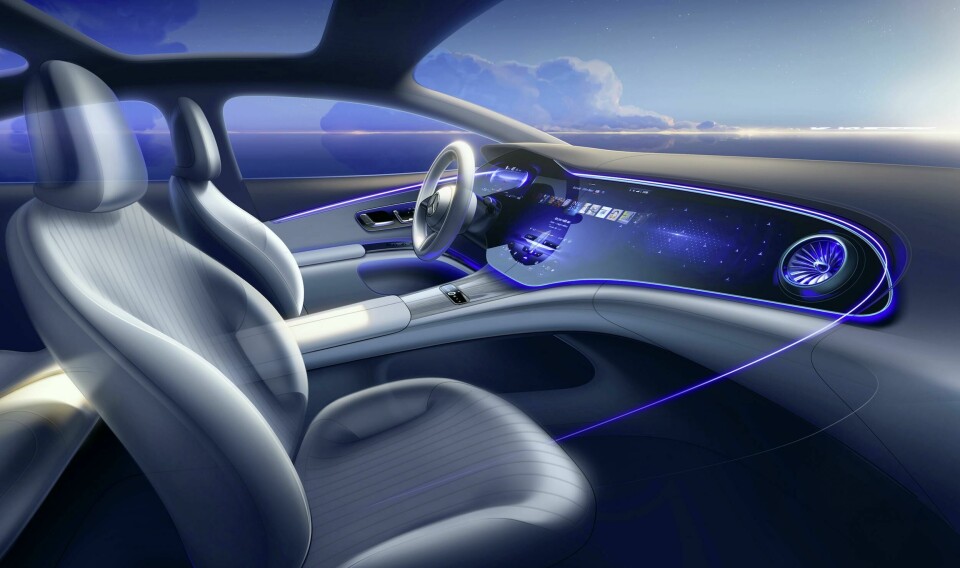
“In the beginning it was more upright and looked more conservative, too much like a vertical wall, but when after a few weeks of trial we got it into a more horizontal angle together with this curvature, we gained fans in all areas. The Hyperscreen was a symbolic expression for the whole car, representing a new era. The EQS is our first electric vehicle to have its own architecture and be fully-electric, not just a variation of a combustion engine package.”
In fact, upon closer pictorial inspection of the full interior, there are some physical buttons on the central transmission tunnel pertinent to the EQS’s Hyperscreen – mute, volume, hazard warning, start-stop and driving modes – and Sinkwitz credits the mk7 S-Class that launched prior to the EQS in autumn 2020 as crucial to its development. “We made the big step with the S-Class from an indirect interface to a direct one,” he says, “where we tried to get the biggest screen format positioned in a convenient way, close to the driver, at the maximum height we could package in an aesthetic way.
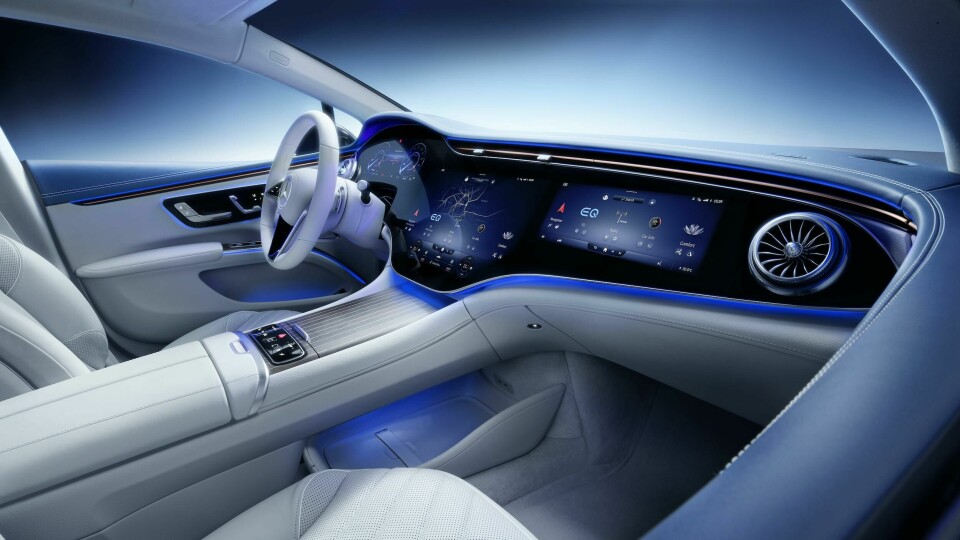
The screen from the Tesla Model S is a bit bigger, but we went for the biggest possible that we could justify between the driver and passenger’s legs. We have many functions in the lower part of the screen so it’s convenient for touch and we wanted to keep that philosophy for the Hyperscreen. We cut away the lower corners of this central screen – to avoid collisions with knees – and as it connects to the upper area and other screens you get a filled space that gives a very strong impression. The Hyperscreen interface is not much different to the EQS entry model’s, but the emotional impact is. You feel like you’re sitting in a car from the future.”
And from that impression, Sinkwitz has a feeling that a significant percentage of EQS customers will “just want the Hyperscreen, like in the past a certain amount of people wanted bigger engines.” We’ll know for sure after it goes on sale later in 2021, but meantime Sinkwitz suspects change is afoot. “We believe there is a shift happening where people are now spending more money on interior options. We have always underestimated take-up rates for large screens on all projects. When we started the current A-Class we thought only a minority would go for the wide screen, but now markets like China don’t want anything else.”
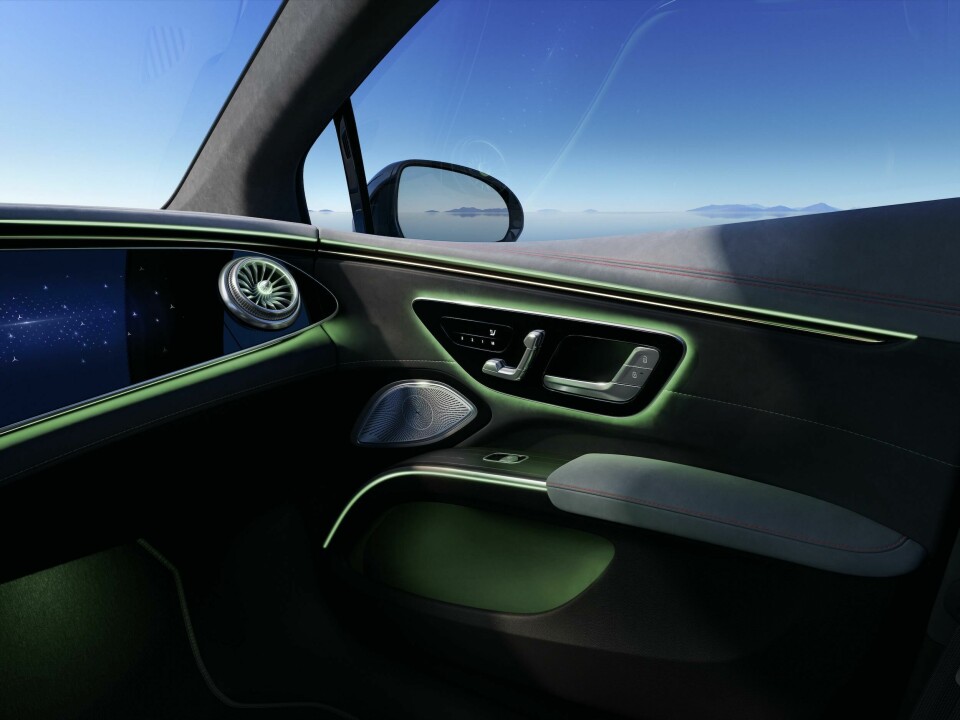
The fact less-trumpeted by Mercedes is that the EQS will also be offered with a ‘regular’ S-Class screen layout sporting a 12.3in driver display plus 12.8in centre screen, rather than the Hyperscreen’s 17.7in centre screen and additional 12.3in passenger screen too. Making these huge screens work safely within a car cabin was another big hurdle. “The greatest challenges were the crash issues,” Sinkwitz says. “This whole unit has a strong metal behind with its own crash structure which can dive into the dashboard by 50mm. Even for side impact there are solutions. The corners pivot and the housings for the air vents are made in such a way that the glass will not crack.”
Sinkwitz also gives great credit to South Korean supplier LG’s role in the Hyperscreen’s development. “Having three large OLED screens under one curved glass 1.15m wide with a high-temperature forming process, was a great risk for the supplier,” he says, “but LG acted very openly and have invested a lot.” It would seem logical that LG will seek to amortise its initial costs by offering similar tech on smaller Mercedes models and also other carmakers in time, but Sinkwitz is confident the Hyperscreen and EQS will stand apart for a good while. “It’s up to everybody to work with everybody,” he says, “but the format we have is exclusive and so characterful – with the corner cuts to the centre console – we will stay as the only one with this solution. There are other solutions when you go more vertical with the screen, but I don’t believe you will see this configuration somewhere else.”
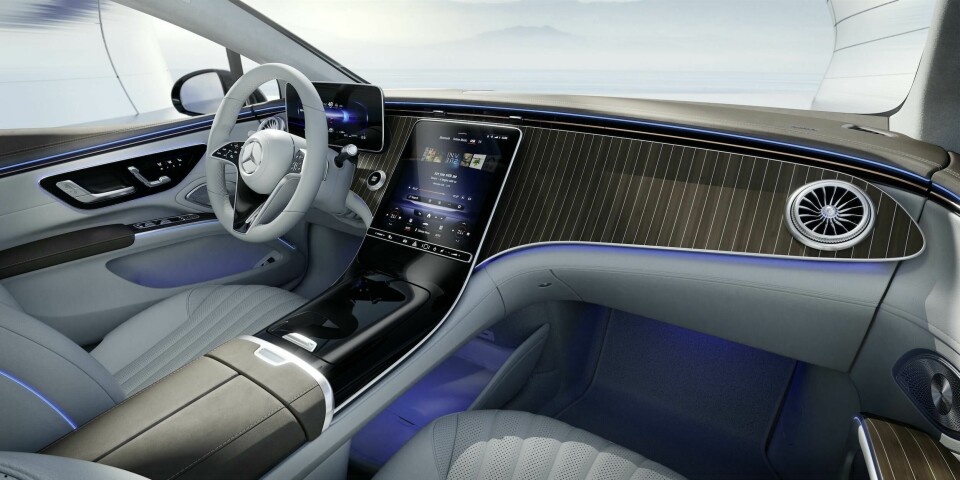
With the Hyperscreen as such a dominant aspect of the EQS’ cabin it could have been easy to neglect the rest of the interior, but Sinkwitz is keen to point out some of the other interior highlights (and their challenges) too. One such unusual feature is the built-in LED piping that pleasingly follows the contour lines of the seating plus more rear-seat screens mounted on the back of the front seats, and that were initially considered in convex form to follow the seat shell’s shape. The latter idea soon had to be shelved for a flat version though. “I gave it a try in the S-Class but had to give it up after several severe discussions about ergonomics with the engineers!” Sinkwitz concedes. But he still thinks screen dependence and growth – despite some car designers voicing fears of ‘screen overload’ – will be with us for many years.
“Look at the success of Netflix and other streaming companies and also aeroplanes where First Class has bigger screens than Business Class,” Sinkwitz says. “I believe screen-based entertainment where people can dive into stories will still be here in 10 or even 20 years. What’s the alternative? We don’t have holography, we can hear music via voice, but screens will stay attractive.”



















